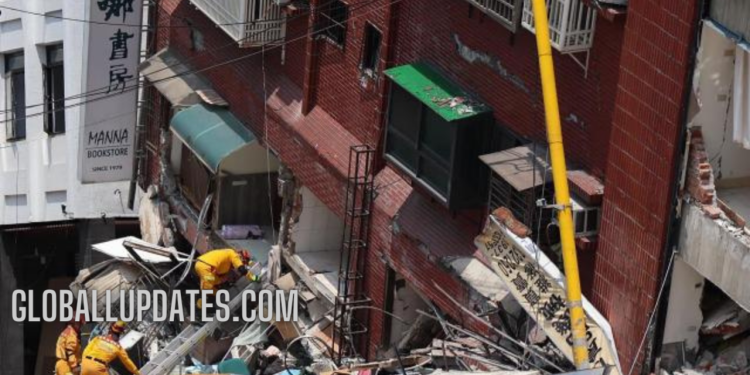A Tremor That Shook the Nation
Early Wednesday, Taiwan faced its most severe seismic challenge in 25 years, as a 7.4 magnitude earthquake struck the eastern coast near Hualien city. The powerful quake not only caused extensive damage but also led to a tragic loss of life, with at least nine confirmed dead and more than 800 injured. The disaster has triggered a massive response effort, aiming to rescue those trapped and provide aid to the affected.
The Epicenter of Catastrophe
The quake’s epicenter, merely 18km south of Hualien, sent tremors across Taiwan, reaching as far as the capital, Taipei, over 100km away. The early hours of the quake saw buildings crumble, roads blocked, and train lines disrupted, especially in Hualien. The region, already remote and difficult to access, found itself further isolated from the rest of Taiwan.
Rescue Missions in Rugged Terrains
In the aftermath, dramatic social media footage revealed landslides tumbling into the sea along the picturesque but perilous coastline. The focus of rescue operations has turned to the Jinwen and Qingshui tunnels, where 77 people remain trapped. The tunnels, part of a tourist route known for its breathtaking views and dangers alike, now symbolize the urgency of the ongoing rescue efforts.
Taipei Shaken
In Taipei, the quake’s impact was vividly felt, with collapsed structures, disrupted lives, and smashed infrastructure painting a picture of the quake’s reach. Local media coverage has been filled with stories of evacuations and the immediate aftermath, highlighting the widespread nature of the disaster.
A Nation’s Response
The response to the earthquake has been swift, with President Tsai Ing-wen assuring the accuracy of information and timely assistance. International support has also been forthcoming, with nations like Japan and Paraguay offering aid. Interestingly, Taiwan thanked China for its concern but stated no assistance was needed from Beijing, underscoring the delicate political context surrounding the self-governed island.
The Path Forward
As Taiwan grapples with the aftermath of this significant earthquake, the resilience of its people and the strength of its emergency response systems are put to the test. The quake serves as a reminder of the island’s vulnerability to natural disasters and the importance of preparedness and unity in the face of such challenges. The coming days will be crucial for the rescue efforts, as the nation hopes to heal and rebuild from this calamity.














































